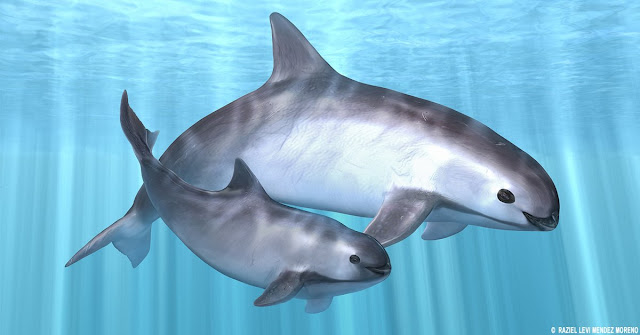An interview with Cabo Pulmo Vivo
Baja Visitor - Can you please tell our readers about Cabo Pulmo? Where it is? Why is it so special?
Pedro Zapata - Of course, Cabo Pulmo is a national park, on the Gulf of California coast, between La Paz and Los Cabos. With over 20,000 years, it is one of the oldest and the most im
 portant coral reef in the Gulf. It has been a protected area, with no fishing allowed, for a little over 15 years. In that time, Cabo Pulmo has experienced an incredible recovery in every aspect of marine life. There are more fish, bigger fish and more complex food chains. Cabo Pulmo is a window where one can see how the Gulf must have been like 100 years ago.
portant coral reef in the Gulf. It has been a protected area, with no fishing allowed, for a little over 15 years. In that time, Cabo Pulmo has experienced an incredible recovery in every aspect of marine life. There are more fish, bigger fish and more complex food chains. Cabo Pulmo is a window where one can see how the Gulf must have been like 100 years ago.Baja Visitor - And what is the organization called Cabo Pulmo Vivo?
Pedro Zapata - Cabo Pulmo Vivo is a coalition of organizations and citizens interested in the conservation of Cabo Pulmo, and concerned with the pressures of unplanned, chaotic growth coming from tourist developments all along the region known as the East Cape.
Baja Visitor - What is the idea of the Cabo Pulmo National Park?
Pedro Zapata - Currently, Cabo Pulmo is a protected area, with more marine life than almost anywhere in the Gulf of California. The idea is that a protected area can provide a livelihood for the people who live near it, without making an extractive use (fishing), but rather focusing it on eco-tourism.
Baja Visitor - Tell us about the animals and plant life in Cabo Pulmo?

Pedro Zapata - Cabo Pulmo is teeming with life! There are plenty of fish: giant groupers, large bass, tuna, jacks, parrotfish, mobulas, etc. Also, predators are coming back. A generation ago, the people of Cabo Pulmo were told stories of sharks, but had never seen them. Today, there are tigers, bulls, white tips and others!! As many of your readers will know, top predators are indicators of healthy ecosystems. Finally, large migrating species stop by Cabo Pulmo on a regular basis these days: humpback whales, whale sharks, giant mantas, marlin and several species of turtles can be seen while diving or snorkeling in the reef. And I haven´t even mentioned the coral... The main threat to all of these forms of life comes from the pressure of tourist developments that are planned throughout the region.
Baja Visitor - How has support from local, state and federal government been?
Pedro Zapata - The federal government is responsible for the management of protected areas like Cabo Pulmo. Although there are important challenges to the management of the area, there is currently good coordination between levels of government.
Baja Visitor - Are you able to get the message out to the public about Cabo Pulmo and Cabo Pulmo Vivo? What methods are you using?
Pedro Zapata - Well, we are trying. There are some television efforts, a lot of newspaper and magazine stories and we are also using social media tools. Editor's Note: as well as blogs like Baja Visitor.
Baja Visitor - What do you want the readers of this interview to take from this? How can they help?
Pedro Zapata - They can help by going to Cabo Pulmo, getting to know it and getting the word out that a different type of tourism is possible, and that big hotels, golf courses and marinas are not the only way forward. Alternatively, they can log on to www.cabopulmovivo.org, where they can find more information.
Baja Visitor - Thank you for your time. Any last words or comments?
Pedro Zapata - Any help is useful: come to Cabo Pulmo and support local businesses, visit our webpage, become a donor or supporter of one of the local NGOs or simply spread the word! Any help you can give will be much appreciated!! We need to make sure the Cabo Pulmo gets told and becomes a model story for other communities and their ecosystems, so that we can have many Cabo Pulmos for generations to come. Thank you!


Comments
Jeff F